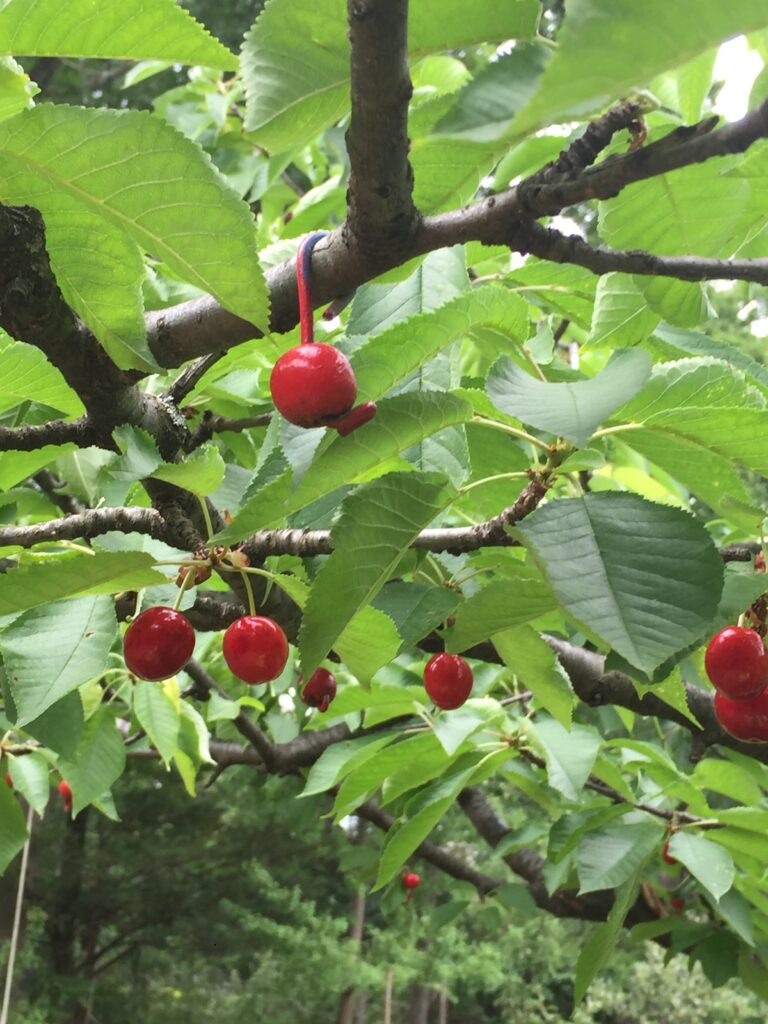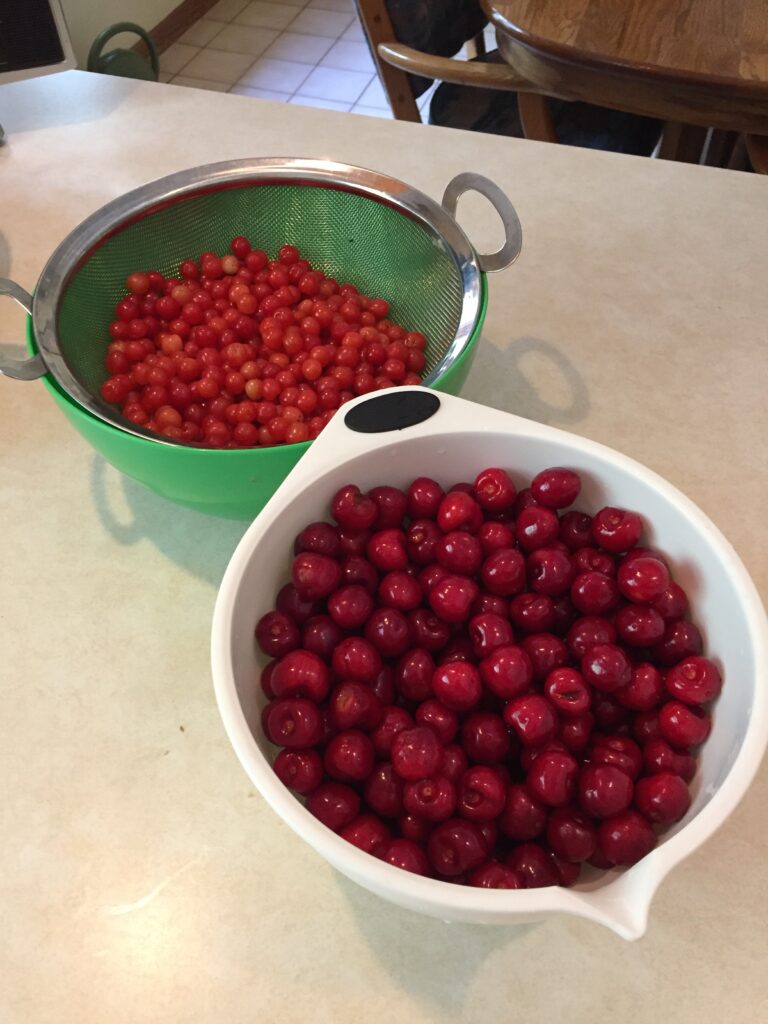In general, there are 2 types of cherry trees, Sweet and Sour (also called Pie or Tart) Cherries.
Most sweet cherry trees require cross pollination from another variety. However, Stella, Black Gold, and North Star sweet cherry trees are self-fertile. These do not require pollen from another variety or cultivar of sweet cherry in order to set fruit. All other cultivars of sweet cherry require pollen from a different, compatible sweet cherry cultivar to set fruit. To be compatible, cultivars must have the same or similar flowering time and pollen ripening period. Honeybees or other insect pollenizers are needed for the best pollination. Wind pollination can occur, but it is not as effective as insect pollination.
Sour cherries are all self-fertile but will usually be more productive with another sour cherry cultivar nearby. Sour cherry trees can be pollinated by other sour or sweet cherry trees or varieties.
Sweet Cherry (Prunus avium, diploid)
There are about 900 varieties of Sweet Cherry. The commonly grown varieties include: Bing, Rainier, Lambert, Carmen, Stella, Royal Ann, Black Tartarian, Lapins, and Emperor Francis.


Sour Cherry (Prunus cerasus, tetraploid)
There are a number of Sour (Pie or Tart) Cherry tree varieties that are commonly grown including Montmorency, Danube, North Star, and Meteor. These fruits are used most often for cooking or baking rather than fresh eating. They are more acidic and less sweet than the fruit of Sweet Cherry trees. These varieties are usually quite hardy even in zone 4.
Some types of sour cherry grow as bushes rather than trees. See Nanking Cherry.
Bird Damage
Bird damage is always a problem with cherries. There a few strategies used to reduce or prevent bird damage.
Bird netting can be used to prevent bird access to the fruit. Unfortunately, birds have very keen eyes and are quite intelligent, so any gaps in the coverage are quickly exploited.
Flash tape can be used. This material comes in long rolls, is about an inch wide, is made of thin mylar, and has a highly reflective surface. When draped on trees or strung along rows of trees, this tape twists and flutters in any slight breeze. As a result, sunlight is reflected at random times and directions. This can be disorienting or disturbing for birds.
Inflatable scary eyes can also be used. These are basically inflatable beach balls painted to resemble large eyeballs and having a number of reflective mylar appliques scattered over their surface. When hung from tree branches, the eyes swing and spin slowly around and the mylar flashes reflected sunlight. Scary eyes should be moved around on the trees each day or two to prevent birds from adjusting to them.
Finally, “decoy fruit” can be hung all around the tree branches to simulate ripe fruit. Birds are highly attracted to red- or orange-colored objects, so decoys should be painted these colors. The decoys should remain permanently on the trees, not hung on the trees only around ripening. When left on the trees at all times, birds check them periodically and repeatedly discover that they are not edible. They learn quickly and have a good memory so, as time passes, they will avoid the trees with colorful decoy fruit in them. Fortunately for us, they usually avoid the trees even when real cherries are ripening on the trees.
Decoy fruit combined with another of the deterrence methods mentioned above can be highly effective in stopping bird damage to cherries and other stone fruits.